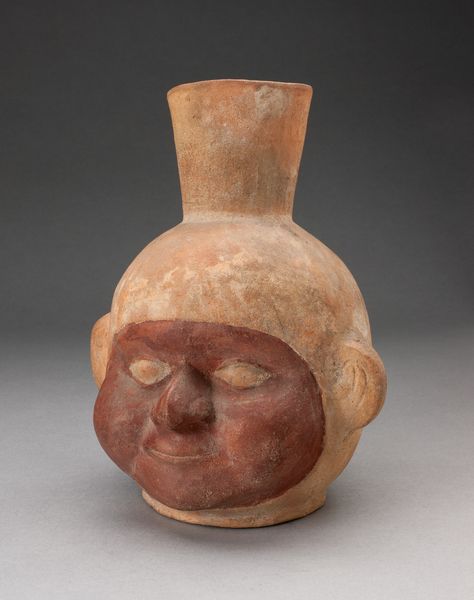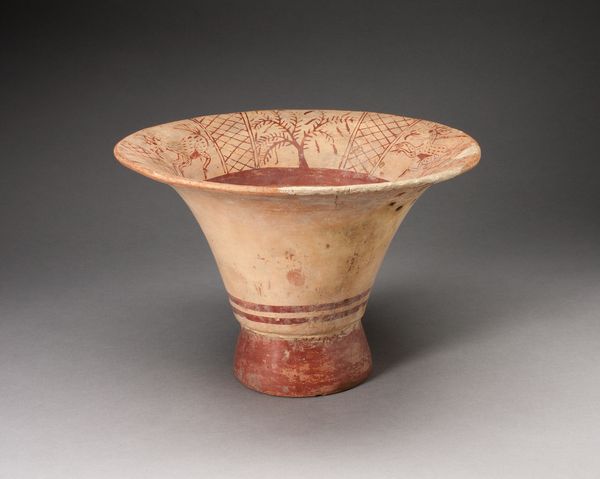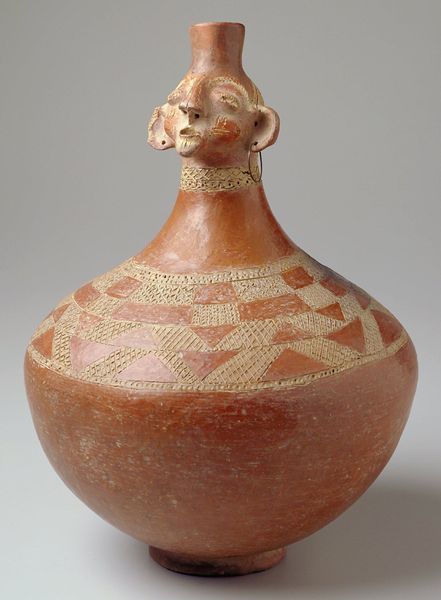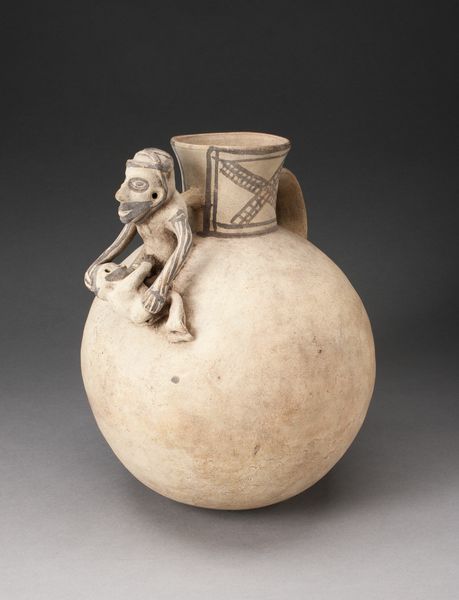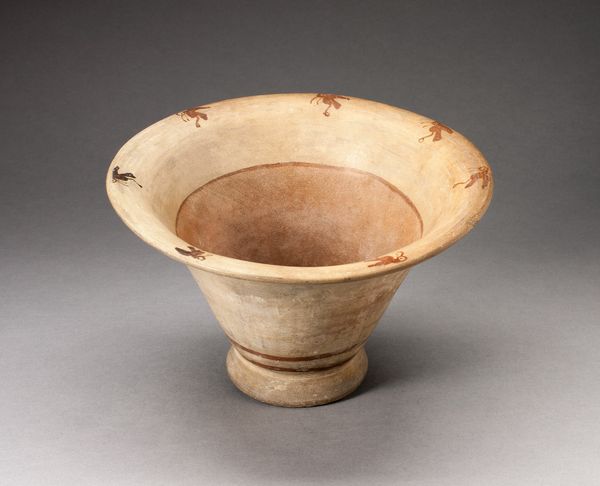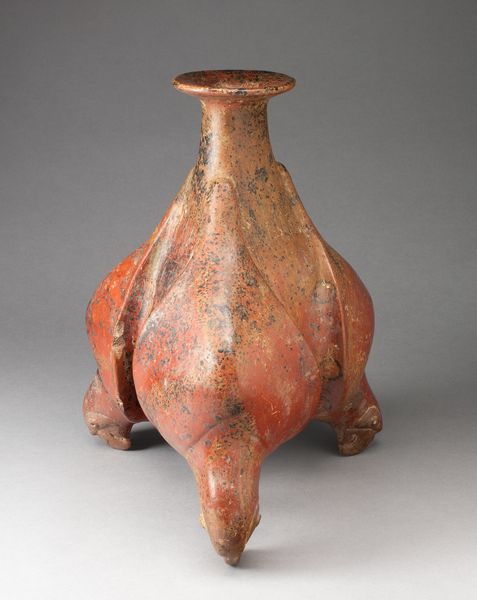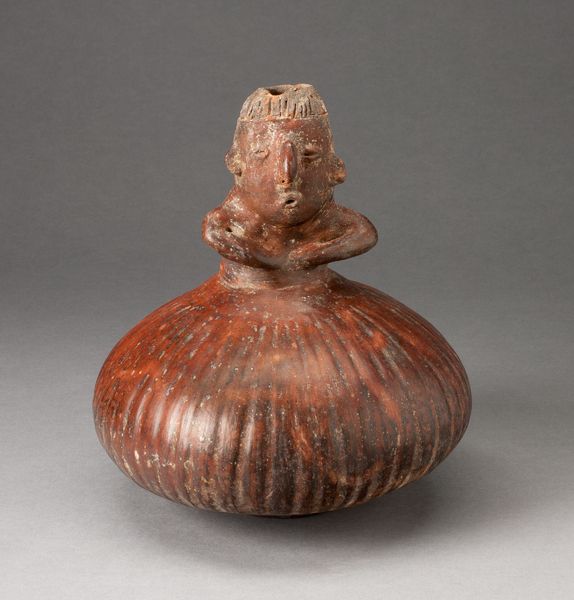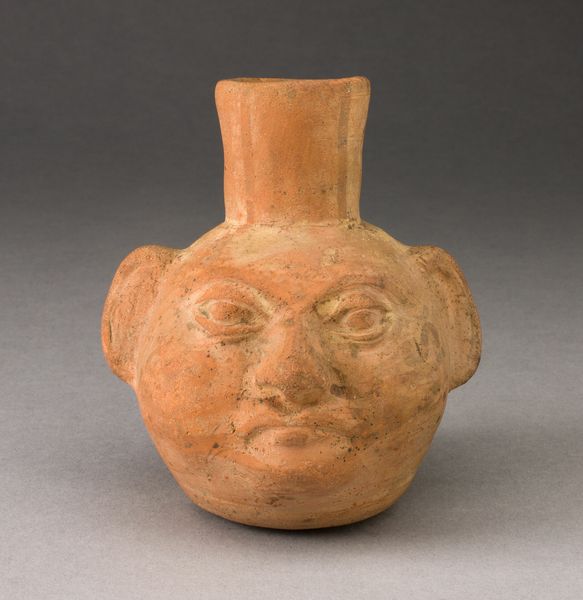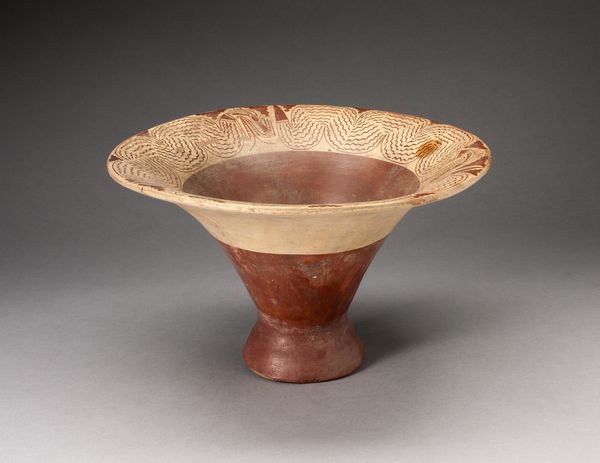
Open-Necked Vessel in the Form of a Human Head, Possibly Deceased c. 200
0:00
0:00
ceramic, sculpture, terracotta
#
portrait
#
ceramic
#
figuration
#
sculpture
#
terracotta
#
indigenous-americas
Dimensions: 21.6 × 21.6 cm (8 1/2 × 8 1/2 in.)
Copyright: Public Domain
Editor: So this is an earthenware vessel from the Jalisco culture, around 200 CE, titled “Open-Necked Vessel in the Form of a Human Head, Possibly Deceased." The face has such a solemn, almost pained expression. How do you interpret this work? Curator: It's striking, isn't it? I see a powerful statement about the intertwined relationship between life and death, so prominent in ancient Mesoamerican cultures. The vessel’s form, merging the functional and the figurative, suggests a ritualistic purpose, perhaps connected to ancestor veneration or funerary rites. Editor: So you’re thinking the vessel may have been used in burial rituals? Curator: Possibly. Notice the face—some interpret it as deceased. But could it also represent a transitional state, a bridge between worlds? It urges us to confront our own anxieties surrounding mortality and to consider how different cultures have negotiated these anxieties through art. It seems important to highlight that death as portrayed can vary according to social or gender class. What are your initial reactions? Editor: I suppose that idea gives a different meaning to the opening at the mouth... as if it's communicating with another world, but through death itself. That is haunting. Curator: Exactly. And considering this work within a contemporary theoretical framework, we might explore themes of identity, representation, and cultural appropriation. Who has the authority to interpret these artifacts? How do we avoid perpetuating colonial narratives in our understanding of pre-Columbian art? Editor: These are vital questions. Looking at the vessel, I now see the importance of approaching ancient art with respect and critical awareness. Curator: Indeed. The vessel isn't merely an object from the past, but a catalyst for crucial dialogues about our present. It forces us to reflect on who creates history and for whom.
Comments
No comments
Be the first to comment and join the conversation on the ultimate creative platform.
